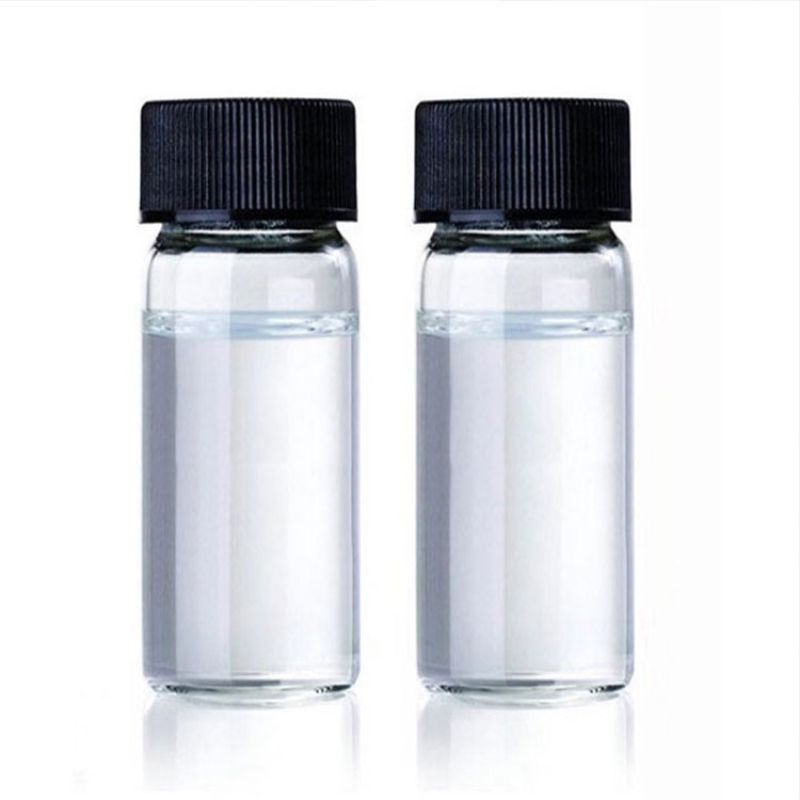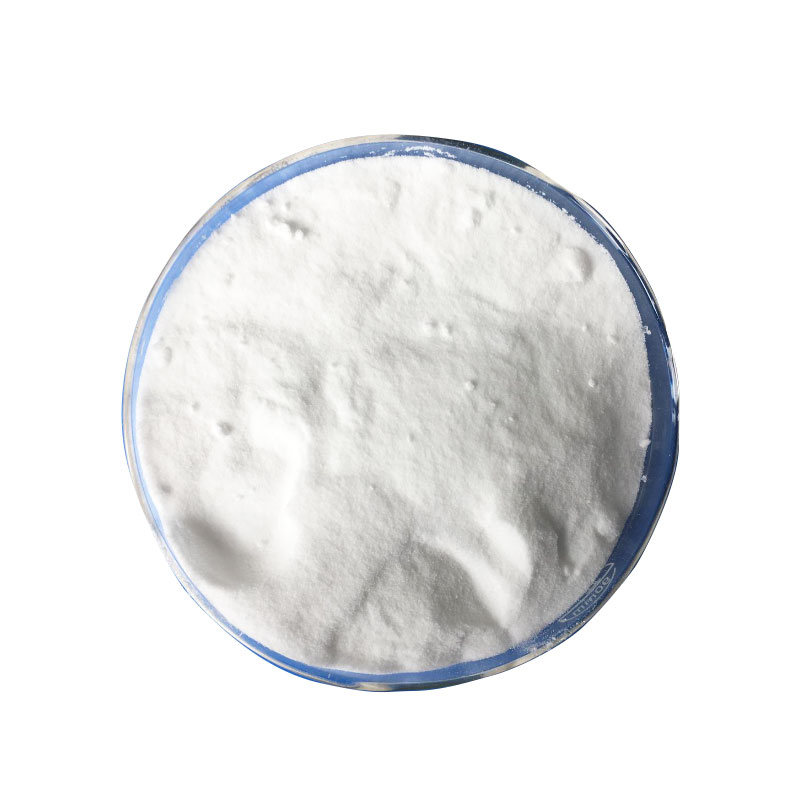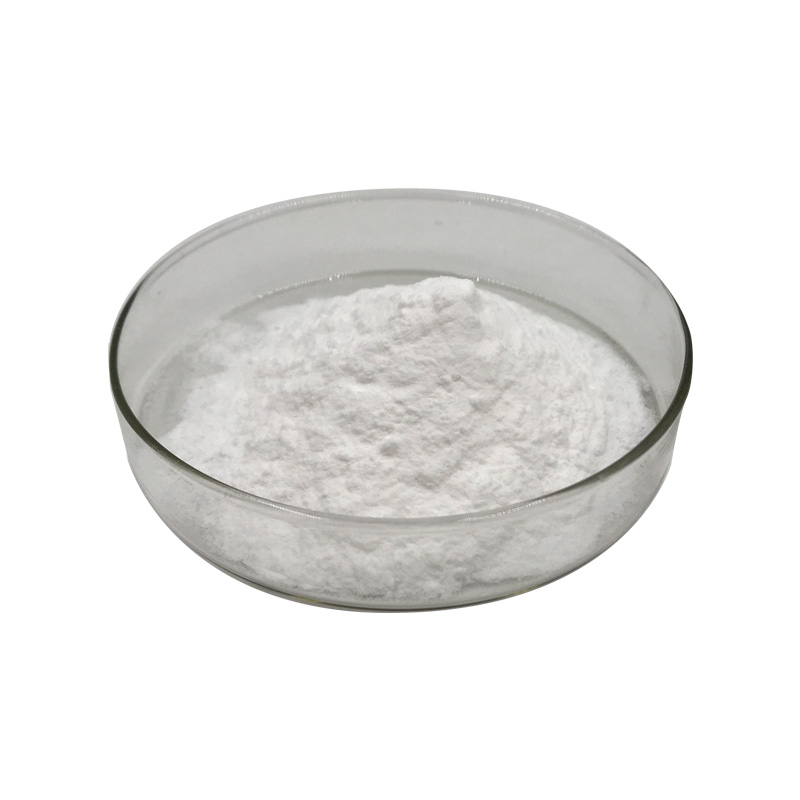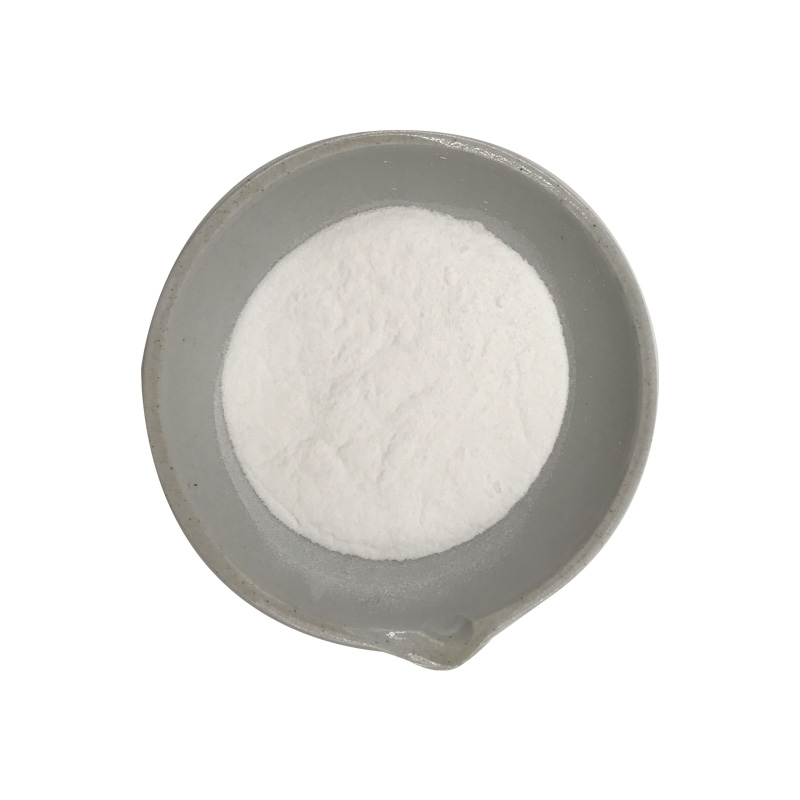Methyltriphenylphosphonium iodide Chemical PropertiesMelting point 183-185 °C(lit.)storage temp. Keep in dark place,Inert atmosphere,Room temperaturesolubility Chloroform (Slightly), Methanol (Slightly)form Powdercolor White to light yellowWater Solubility SOLUBLESensitive Light Sensitive & HygroscopicInChIInChI=1S/C19H18P.HI/c1-20(17-11-5-2-6-12-17,18-13-7-3-8-14-18)19-15-9-4-10-16-19;/h2-16H,1H3;1H/q+1;/p-1InChIKeyJNMIXMFEVJHFNY-UHFFFAOYSA-MSMILES[P+](C)(C1=CC=CC=C1)(C1=CC=CC=C1)C1=CC=CC=C1.[I-]CAS DataBase Reference2065-66-9(CAS DataBase Reference
Contacta ahora
Products Description of Homopiperazine CAS#505-66-8Homopiperazine is a nitrogen-containing seven-membered ring compound and an important pharmaceutical intermediate. Most of its derivatives have strong biological activity and medicinal value and can be used to synthesize drugs such as homopiperazine hydrochloride, cyclizine, carbamazepine, quinolones and chlorcyclizine.
Contacta ahora
Products Description of Piroctone Olamine CAS#68890-66-4The unique properties of piroctone ethanolamine salt are mainly manifested in:1. The anti-dandruff and anti-itching effects are better than similar products.2. The solubility and compounding properties are excellent, and no precipitation or stratification will occur when mixed with cosmetic raw materials.3. The anti-dandruff mechanism is unique, the irritation is extremely low, and it will not cause hair loss or hair breakage.
Contacta ahora
Products Description of 4-tert-Octylphenol CAS#140-66-9It is widely used in the manufacture of oil-soluble octylphenol-formaldehyde resins, surfactants, medicines, pesticides, additives, adhesives, and ink fixatives.4-tert-Octylphenol Chemical PropertiesMelting point 79-82 °C(lit.)Boiling point 175 °C30 mm Hg(lit.)density 0.95 g/cm3 (20℃)vapor pressure 2Pa at 38℃refractive index 1.5003 (estimate)Fp 145 °Cstorage temp. -20°Csolubility water: slightly soluble0.007g/L at 20°Cpka10.15±0.15(Predicted)color White flakesPH Range6 a
Contacta ahora
Products Description of O-Phenanthroline CAS#66-71-71,10-Phenanthroline monohydrate is an organic intermediate, white crystalline powder. It is a redox indicator, a reagent for the determination of ferrous iron, palladium, vanadium, copper, and iron.Monohydrate is a white crystalline powder.
Contacta ahora
Products Description of (1H-indol-3-yl)(2,2,3,3-tetramethylcyclopropyl)methanone CAS#895152-66-6White powder(1H-indol-3-yl)(2,2,3,3-tetramethylcyclopropyl)methanone Chemical PropertiesBoiling point 375.0±15.0 °C(Predicted)density 1.099±0.06 g/cm3(Predicted)storage temp. 2-8°Csolubility DMF: 50 mg/ml; DMF:PBS (pH 7.2); (1:7): 0.13 mg/ml; DMSO: 33 mg/ml; Ethanol: 17 mg/mlform A crystalline solidpka15.50±0.30(Predicted)InChIInChI=1S/C16H19NO/c1-15(2)14(16(15,3)4)13(18)11-9-17-12-8-6-5-7-10(11)12/h5-9,14,17H,1-4H3InChIKeyWYZQBEQQQKCTHM-UHFFFAOYSA-NSMILESC(C1C2=C(NC=1)
Contacta ahora
Products Description of 5-Chlorothiophene-2-Sulfonamide CAS#53595-66-72-Chlorothiophene-5-sulfonamide is a white powder crystal, which is often used as a pharmaceutical intermediate and pharmaceutical raw material.5-Chlorothiophene-2-Sulfonamide Chemical PropertiesMelting point 113-117 °C(lit.)Boiling point 366.3±52.0 °C(Predicted)density 1.649±0.06 g/cm3(Predicted)storage temp. under inert gas (nitrogen or Argon) at 2–8 °Csolubility soluble in Methanolform powder to crystalpka9.75±0.60(Predicted)color White to Light yellow to GreenCAS DataBase Refe
Contacta ahora
Products Description of Ethylene glycol monoethyl ether acetate CAS#111-15-9Colorless liquid. Freezing point -61.7℃, boiling point 156.3℃, 51℃ (2.8kPa), relative density 0.973 (20℃), melting point -61.7℃, refractive index 1.4055 (20℃), flash point 51℃ (closed cup), 66℃ (open cup), ignition point 379℃. Miscible with general organic solvents and soluble in water.
Contacta ahora
Products Description of Pyrazine CAS#290-37-9Pyrazine is a chemical.CAS No. is 290-37-9.Pyrazine Chemical PropertiesMelting point 50-56 °C (lit.)Boiling point 115-116 °C (lit.)density 1.031 g/mL at 25 °C (lit.)refractive index 1.5235FEMA 4015 | PYRAZINEFp 132 °Fstorage temp. Store below +30°C.solubility SOLUBLEpka0.65(at 27℃)form Crystalscolor WhiteSpecific Gravity1.031Odorat 0.10 % in propylene glycol.
Contacta ahora
Products Description of Stannous methanesulfonateCAS#53408-94-9Colorless transparent liquid with the smell of rotten eggs.Stannous methanesulfonate Chemical PropertiesMelting point -27°Cdensity 1.55refractive index 1.444Specific Gravity1.550Water Solubility Not miscible or difficult to mix in water.Sensitive Air SensitiveHydrolytic Sensitivity0: forms stable aqueous solutionsExposure limitsACGIH: TWA 0.1 mg/m3; STEL 0.2 mg/m3 (Skin)NIOSH: IDLH 25 mg/m3; TWA 0.1 mg/m3InChIKeyJALQQBGHJJURDQ-UHFFFAOYSA-LCAS DataBase Reference53408-94-9(CAS DataBase Reference)EPA Subs
Contacta ahora
Products Description of Benzylamine CAS#100-46-9Benzylamine, also known as benzylamine, is an organic compound with the chemical formula C7H9N.
Contacta ahora
Products Description of Casein CAS#9000-71-9 Casein is the main protein in the milk of mammals, including cows, sheep and humans. The protein in milk is mainly casein, while human milk is mainly albumin. Casein is a large, hard, dense, and extremely difficult to digest and decompose curd.Casein is the highest content protein in milk. It is currently mainly used as a food raw material or microbial culture medium.
Contacta ahora
Products Description of 2,4,6-TRIMETHOXYPYRIMIDINE CAS#13106-85-92-Amino-2-cyclobutylethanol is a chemical.CAS No. is 13106-85-9.2,4,6-TRIMETHOXYPYRIMIDINE Chemical PropertiesMelting point 51-54 °C (lit.)Boiling point 232 °Cdensity 1.150±0.06 g/cm3(Predicted)storage temp. Sealed in dry,Room Temperaturesolubility Methanol[soluble in]solubility soluble in Methanolform powder to crystalpka1.16±0.30(Predicted)color White to Almost whiteCAS DataBase Reference13106-85-9(CAS DataBase Reference)Safety InformationHazard Codes XiRisk Statement
Contacta ahora
2,3,4,6-Tetra-O-benzyl-D-glucopyranose Chemical PropertiesMelting point 145-149 °C(lit.)Boiling point 672.4±55.0 °C(Predicted)density 1.22±0.1 g/cm3(Predicted)storage temp. Sealed in dry,Store in freezer, under -20°Csolubility Soluble in chloroformpka11.87±0.70(Predicted)form Solidcolor White to Off-Whiteoptical activity[α]20/D +49±2°, c = 2% in dioxaneInChIKeyOGOMAWHSXRDAKZ-BKJHVTENSA-NSMILESOC1O[C@H](COCC2=CC=CC=C2)[C@@H](OCC2=CC=CC=C2)[C@H](OCC2=CC=CC=C2)[C@H]1OCC1=CC=CC=C1CAS DataBase Reference4132-28-9(CAS DataBase Reference)Safety InformationHazard
Contacta ahora
Products Description of Dipentaerythritol hexaacrylate CAS#29570-58-9White powderDipentaerythritol hexaacrylate Chemical PropertiesBoiling point 640.7±55.0 °C(Predicted)density 1.184±0.06 g/cm3(Predicted)Fp 266 °Cstorage temp. Sealed in dry,Room Temperatureform Liquidcolor Colorless to Light yellow to Light orange clear liquidEPA Substance Registry SystemDipentaerythritol hexaacrylate (29570-58-9)Factory and Equipment ShowFast delivery timeInventory 2-3 working days New production 7-10 working days
Contacta ahora
SCANDIUM CHLORIDE CAS#10361-84-9Overview:Scandium Chloride, with the chemical formula ScCl3 and CAS number 10361-84-9, is a significant industrial chemical known for its unique properties and wide range of applications.
Contacta ahora
Products Description of Polyisobutylene CAS#9003-27-4Ammonium Chloride (CAS#12125-02-9) is a white crystalline salt that is highly soluble in water, with a solubility of 37.2 g/100 g at 20°C. It is a crucial component in agricultural fertilizers, providing essential nitrogen for plant growth. This compound is also used as a feed additive and in various industrial applications due to its versatility. In agriculture, Ammonium Chloride is valued for its ability to enhance soil fertility and promote robust plant development.
Contacta ahora
Polyacrylonitrile CAS#25014-41-9 Polyacrylonitrile is a kind of synthetic resin manufactured through the free radical polymerization of acrylonitrile. It belongs to the acrylic resin family. It is thermoplastic, and is resistant to most solvents and chemicals because of the strong chemical bonds formed between the nitrile groups. It is a kind of versatile polymer which can be used to produce many kinds of products such as fibers for textiles, ultra filtration membrane, carbon fiber and hollow fibers for reverse osmosis.
Contacta ahora
Products Description of 4-Aminotetrahydropyran CAS#38041-19-94-Aminotetrahydropyran can be used as an organic synthesis intermediate and pharmaceutical intermediate4-Aminotetrahydropyran Chemical PropertiesBoiling point 60 °Cdensity 0.977 g/cm3 at 25 °Crefractive index n20/D 1.463Fp 54°Cstorage temp. Keep in dark place,Inert atmosphere,2-8°Cpka9.63±0.20(Predicted)form liquidcolor ColourlessInChIKeyAHVQYHFYQWKUKB-UHFFFAOYSA-NCAS DataBase Reference38041-19-9(CAS DataBase Reference)Safety InformationHazard Codes Xi,XnRisk Statements 10-34-41-
Contacta ahora
Antioxidant 1035 Chemical PropertiesMelting point 78 °CBoiling point 659.4±55.0 °C(Predicted)density 1.072±0.06 g/cm3(Predicted)storage temp. Sealed in dry,Room Temperaturesolubility DMSO (Slightly), Methanol (Slightly)form Solidpka12.02±0.40(Predicted)color White to Off-WhiteCAS DataBase Reference41484-35-9(CAS DataBase Reference)EPA Substance Registry SystemThiodi-2,1-ethanediyl bis[3,5-di-tert-butyl-4-hydroxyhydrocinnamate] (41484-35-9)Safety InformationRTECS DA8342500HS Code 2930.90.2900Factory and Equipment ShowFast delivery timeInventory 2-3 w
Contacta ahora
Products Description of CARBOMER CAS#9007-20-9 Polyacrylic acid, referred to as PAA, also known as 2-acrylic acid homopolymer, acrylic resin coating, acrylic resin, acrylic monomer polymer, acrylic modified resin, acrylic resin emulsion, is a water-soluble acrylic polymer, and is also soluble in certain polar solvents, such as methanol, dioxane and ethylene glycol. The ionization constant is 4.75. Since the molecule contains a large number of carboxyl groups, it can react with alkali, alcohol, and amine, and can also undergo dehydration, degradation and complexation reactions.
Contacta ahora
Products Description of Sulfuric acid CAS#7664-93-9Sulfuric Acid (CAS# 7664-93-9) is a potent, colorless, and odorless mineral acid with a wide range of applications across various industries. As a cornerstone in chemical manufacturing, it's instrumental in producing fertilizers, dyes, and pigments. Its strong dehydrating and oxidizing properties make it indispensable in metal processing and refining petroleum. In the laboratory, it's a versatile reagent for titration and sample preparation.
Contacta ahora
Products Description of Triethylenediamine CAS#280-57-9Triethylenediamine, also known as 1,4-diazabicyclo〔2.2.2〕octane, or triethylenediamine, abbreviated as DABCO or TEDA in English, has a chemical formula of C6H12N2.
Contacta ahora
Products Description of Dextrin CAS#9004-53-9White amorphous powder, odorless, slightly sweet taste.Dextrin Chemical PropertiesMelting point 53.75-54 °Cdensity 0.8 g/cm3storage temp. Store at RT.solubility H2O: 0.1 g/mL hot, complete, yellow to very deep yellowform powdercolor yellowOdorodorlessWater Solubility Soluble in hot water (0.1 g/ml).Sensitive HygroscopicMerck 14,2953Dielectric constant2.2(Ambient)Stability:Stable. Combustible.
Contacta ahora

































